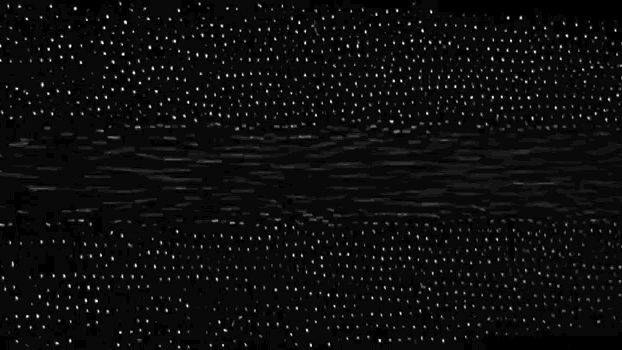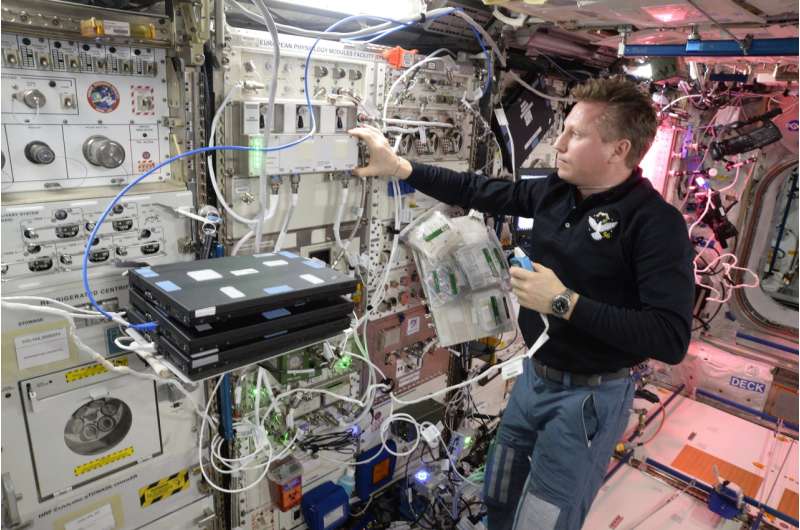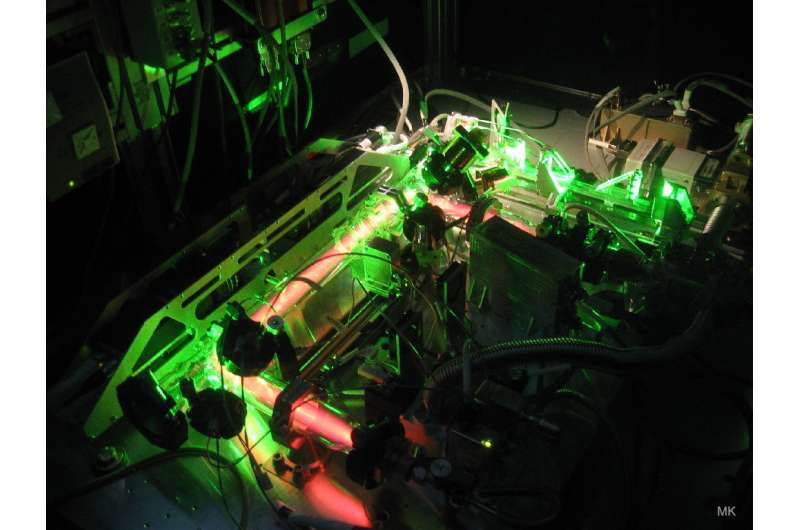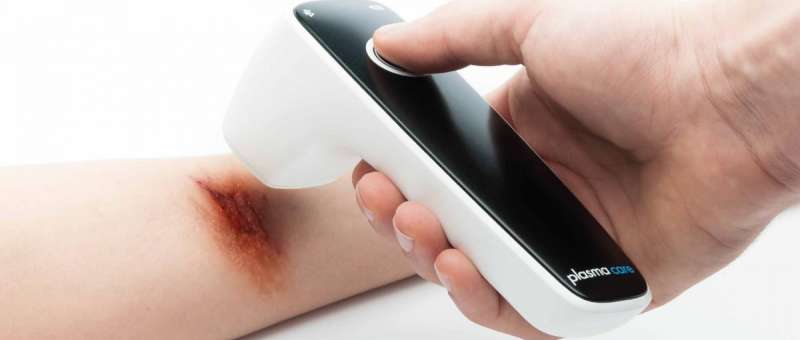A space playground for the fourth state of matter

A recipe to understand atomic structures:
- Mix electrically-charged gas in a sealed container with particles so small they would pass through a coffee filter.
- Perform in the weightless environment of the International Space Station.
- Adjust voltage to observe how the particles form three-dimensional crystal structures.
- Start unlocking the physics behind the atoms' behaviour.
This is part of the formula for Plasma Kristall, the longest-running series of experiments in the history of human spaceflight and the results of the latest campaign will return to Earth next week in the Soyuz spacecraft with ESA astronaut Alexander Gerst.
The recipe comes from a European-Russian collaboration that has been slow-cooking since 1998. After running on parabolic flights, sounding rockets and the Mir space station, the experiment found a new home at the International Space Station in 2001.
Our world is made of atoms and molecules, but even with the most powerful microscope we cannot see them moving in liquids or solids. Running experiments in weightlessness allows researchers to gain new insights into the atoms' interaction by using tiny plastic particles that behave like atoms.

"Doing this research on Earth is not possible – Plasma Kristall models atomic interactions on a larger scale, making their motion visible to us," explains Hubertus Thomas, lead scientist of this experiment at the German Aerospace Centre, DLR.
Hubertus has followed plasma research in microgravity the experiment when the first crew arrived at the Space Station and turned it on. Recently, a problem with the valve that regulates the gas flow forced an 18-month pause. With a newly refurbished valve, Plasma Kristall-4 (or PK-4) resumed operations last month.
Proxy atoms back to science
A plasma is an electrically-charged gas, somewhat like lightning, that rarely occurs on Earth. It is considered to be the fourth state of matter, distinct from gas, liquids and solids.

"We excite the particles using electrical fields, a laser and changes in temperature to move them in the plasma," says Hubertus.
These manipulations cause the proxy atoms to interact strongly, leading to organised structures – plasma crystals. The particles in PK-4 are made of plastic and bond to each other or repulse each other just as atoms do on Earth in a fluid.
"By adjusting the voltage across the experiment chamber we can tailor their interactions, and observe each microparticle individually and as if in slow motion," explains Hubertus. Using PK-4, researchers across the world can follow how an object melts, how waves spread in fluids and how currents change at the atomic level.
The latest science run covered phase transitions, microscopic motions and shear forces. Shearing forces are a very hot topic in fundamental physics. These forces push one part of a body in a specific direction, and another part in the opposite direction, as for example the pressure of air along the front of an airplane wing.
The future of plasma

This research is mainly textbook knowledge for future scientists and engineers. "If you had asked Einstein what his theory of relativity was for, he would never have replied that it was to build a navigation system for your mobile phone," points out Hubertus.
A team of scientists has already made use of the know-how gained from the technological development of this space experiment to design plasma devices for the disinfection of wounds at room temperature. This revolution in healthcare has many practical applications, from food hygiene to treatment of different kinds of skin diseases, purification of water and odour management.
Provided by European Space Agency




















